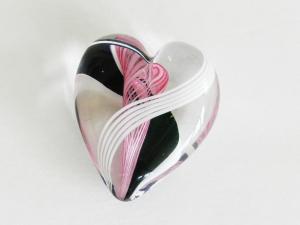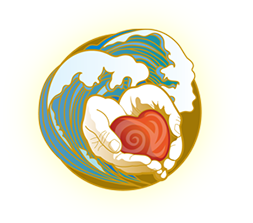 One of the most profound and transformative questions I have ever asked in my life is, “What is healing?” I’m still asking the question. For me, the answer is continually unfolding into endless complexity and, at the same time, into an elegant and beautiful simplicity. I’m not sure this kind of inquiry ever really ends. It’s one of those questions where the answer seems obvious at first, but if we are willing to dive deep into the inquiry, the less certain the answer becomes.
One of the most profound and transformative questions I have ever asked in my life is, “What is healing?” I’m still asking the question. For me, the answer is continually unfolding into endless complexity and, at the same time, into an elegant and beautiful simplicity. I’m not sure this kind of inquiry ever really ends. It’s one of those questions where the answer seems obvious at first, but if we are willing to dive deep into the inquiry, the less certain the answer becomes.
The Western Model of Injury, Disease and Healing
The way that I had viewed injury and disease up until a few years ago is probably fairly typical, at least for those of us with the privilege of access to western medicine. In this view, injury and disease are seen as distinct conditions which can (hopefully) be understood, diagnosed, and treated. Treatment in this case means fixing, curing, or eliminating the condition, or at least alleviating the associated symptoms. If we are “cured” in this way, this is considered healing.
This model has been extremely effective in treating injury and illness. If we break a bone, doctors know exactly what to do (set the bone, put us in a cast, surgery if needed, etc.). They also know what to recommend we do during the recovery period to maximize the potential for full healing. If we have a disease caused by, for instance, a specific parasite or bacteria, doctors hopefully have medication which can kill off the offender, thus curing us from the disease. Incredible advances have been made in the treatment of injury and disease with this approach. Western medicine typically utilizes pharmaceutical drugs, surgery, mechanical therapies, and some forms of psychotherapy as methods of treatment. Alternative and eastern medicine (when applied with this western perspective) uses nutritional approaches, herbal remedies, and/or helps correct underlying energetic imbalances.
Limitations of the Western Model
There is no question that this approach to medicine and healing has revolutionized healthcare. The breadth and depth of what can be treated with Western medicine is truly astonishing. I personally feel incredibly privileged to have access to this kind of medicine. At the same time, this approach does have limitations. If we want to continue to evolve healthcare, we must acknowledge both the positive aspects as well as the limitations of the current model, so that we can keep what is working and develop new approaches to address what is not.
The human body is a dynamic, complex, interconnected system. Western medicine’s success has come from isolating parts and sub-systems within the body, studying them in depth, and devising ways to treat those parts or systems. The strategy is to isolate specific patterns and conglomerations of symptoms, label the collection as a “disease” so that is can be accurately diagnosed, and then attempt to directly treat this separate “thing” (this disease). However, since the body is holistic in nature, no parts exist in isolation. Therefore, there are often unintended systemic consequences when we attempt to isolate and treat specific parts, even when we are targeting “foreign invaders” such as viruses and bacteria. For example, many of us have had the experience of taking a medication with such severe side effects that we are prescribed another medication to treat the side effects of the first… and perhaps a third to treat the side effects of the second. What we call side effects are really just effects of a medication on our holistic system. It is difficult to isolate the effects of medication to treat only specific parts because everything is interconnected in our bodies.
A related issue with this model is that we tend to view every kind of condition through one basic lens and therefore attempt to treat everything using the same underlying approach. The Western model is a direct, outside-in approach. We look at conditions objectively — meaning from an observational standpoint — and then attempt to treat the conditions from the outside-in using tools such as medication, surgery, or traditional therapy. While this works very well in straightforward (although not necessarily simple) cases such as the ones described above, it has limitations in systemic cases such as autoimmune disorders, metastatic cancers, cardiovascular disease, chronic pain, fibromyalgia, mental illness, and trauma, not to mention mystery conditions which no doctor is able to diagnose or adequately address. We also run into significant problems when suffering is involved, which I will talk about next.
In my view, many issues the medical profession labels as “disease” are not actually diseases in a straightforward sense. Why do I say this? Because how we relate to ourselves, the people in our lives, and the situations and events we encounter (both past and current) can actually be a significant factor in creating many conditions the Western medical profession now labels as disease. If our relationship to what is happening in our lives, or what we perceive is happening, is one of resistance, we will be suffering in one way or another. (Check out my blog, “Suffering 101,” for my definition of suffering and for more on this topic.) This is important because suffering itself manifests in a variety of ways, including as physical, mental, emotional, and spiritual symptoms and conditions. Furthermore, once we are experiencing symptoms, our personal experience of and relationship to these conditions is often one of resistance (more suffering), thus compounding the issue further. And it turns out we cannot approach suffering in the same way we approach straightforward injury and disease. Not only will this approach utterly fail, it can actually make things significantly worse.
Many (if not most) conditions involve some sort of combination of physiological disease / injury and suffering. It is easy to see, then, why the Western model comes up against its limitations in many cases. Fortunately, there is a partner approach to healing which can help us address some of the limitations of the Western model without denigrating or taking away any of its positives aspects. One of the most incredible aspects of this other approach is that it works well with systemic issues and is also very effective in working with suffering.
The Inside-Out Approach to Healing
The inside-out approach to healing is slowly gaining appreciation in the medical world, although it is still sometimes ignored and even dismissed by Western medical professionals. Nonetheless, I truly believe that once the inside-out approach is fully embraced, the two models working together as “partners” will take healthcare to the next level. It is already happening!
We all know that the body has an inherent capacity to heal. When we cut our finger, somehow our cells and tissues work together to magically heal the cut. When we break a bone, it isn’t the doctors that ultimately heal the break; it is our bodies that do the healing. We also see how powerful this healing capacity can be in the placebo effect, and in the plethora of miraculous healings that traditional doctors cannot explain. But how can we consciously and consistently activate and amplify this innate healing potential? That’s the million dollar question!
The indirect, inside-out approach to healing has been developed as a living answer to this question. In my experience, there two key features to this approach. First, we acknowledge — we have an embodied knowing — that there exists an innate and inherent Health and Intelligence within all of us, and that this Intelligence actually knows more than we do about the conditions we are facing. Secondly, we understand that this underlying Intelligence comes to the forefront and thrives in certain conditions and becomes obscured in others. We see that given the right conditions, this Healing Intelligence will organize into an “inherent treatment plan” that moves from the inside-out and is completely unique to us. In short, with this approach, we begin to orient to the innate Health within us and create the right conditions for It to flourish.
Creating the Right Conditions for Inside-Out Healing
What are the right conditions for Healing in this way? Healing from the inside-out is more about allowing than direct action. A good metaphor to illustrate this point is farming. We are not the ones that “make” seeds transform and grow into a plant; there is an inherent Intelligence within and around the seed that does that. But what we can do is cultivate and nurture the soil in which the seed is planted. We can create the “right conditions” within the soil so that the seed can more easily grow into a beautiful plant. The same is true with inside-out Healing. In the indirect approach, we do not directly “do” the Healing, but instead we create the conditions in which it can more easily occur. Below is a list of some of the most important aspects or conditions we can cultivate in ourselves to support and amplify our Healing potential in this way.
- Getting the Right Support. This is perhaps the most important condition for Healing. The main reason for this is, in almost all cases, our deep woundings — which are often an integral component in health challenges — occur in relationship. Therefore, we need to engage in the Healing process within the context of safe, healthy relationship. This is particularly true in the case of trauma. It is imperative to find people to support us (individuals and/or groups) who have the capacity to see us and hold us in our inherent Wholeness and Health. Biodynamically-oriented therapists like myself have been specifically trained in skills of relationship and presence at levels and depths not commonly found in alternative or western medicine. We have also developed the perceptual capacity to sense and connect with the underlying forces of Health in both ourselves and our clients. We can therefore guide and support clients in orienting to these forces within themselves, thus activating their innate Healing capacities.
- Understanding the Nature of Suffering. As I shared above, suffering is often an integral aspect in our health challenges. Understanding the cycle of suffering is critical on the Healing journey. We will remain in the cycle of suffering until we understand that the only way out is to begin to orient to something else — an aspect of us that does not suffer.
- Taking Responsibility. A critical aspect of Healing is the movement out of victim consciousness into responsibility. Victim consciousness is the belief that our suffering is someone else’s fault or a result of (or intrinsic within) some condition or circumstance we are experiencing. Healing begins with the recognition that no matter what condition we are facing, how we relate to that condition is our responsibility and no one else’s. We begin to take responsibility for our own responses when we realize our responses are not controlled by other people, conditions, or circumstances.
- Orienting to “Something Else” That Is Not Pain or Suffering. Whether we are experiencing pain / discomfort as a direct result of physiological injury or disease, or we are experiencing suffering, or both, we must first learn in an embodied way that there is more to us than pain or suffering. This part of us — this
 “something else” — has been called by many names. In biodynamic craniosacral work, we often refer to it as “Health.” This part of us is something bigger than our suffering, something deeper, something Intelligent, something dynamic and alive, something whole, complete and supporting us at all times. It can be experienced in many ways — as sublime stillness, or as the creative forces constantly at play in and around us, or as qualities that have been given names like joy, gratitude, love, peace, abundance, unity, and more. It can also be experienced in seemingly ordinary ways, such as suddenly being able to feel a part of our body that doesn’t hurt when we thought all that existed was pain, or feeling the affection in our hearts for a pet that we love dearly. As we begin to directly experience this underlying Health, we start to remember who we are at a deeper level. And as we practice orienting to this “something else,” it acts as a resource as we move into working with our more difficult conditions. We can literally feel it supporting us and, therefore, we now have the capacity to work with our challenges in ways we haven’t been able to before.
“something else” — has been called by many names. In biodynamic craniosacral work, we often refer to it as “Health.” This part of us is something bigger than our suffering, something deeper, something Intelligent, something dynamic and alive, something whole, complete and supporting us at all times. It can be experienced in many ways — as sublime stillness, or as the creative forces constantly at play in and around us, or as qualities that have been given names like joy, gratitude, love, peace, abundance, unity, and more. It can also be experienced in seemingly ordinary ways, such as suddenly being able to feel a part of our body that doesn’t hurt when we thought all that existed was pain, or feeling the affection in our hearts for a pet that we love dearly. As we begin to directly experience this underlying Health, we start to remember who we are at a deeper level. And as we practice orienting to this “something else,” it acts as a resource as we move into working with our more difficult conditions. We can literally feel it supporting us and, therefore, we now have the capacity to work with our challenges in ways we haven’t been able to before.
- Slowing Down and Getting Present. In order to be able to orient to that “something else,” we must slow down. As one of my teachers likes to say, “The pace of Health is slow.” Slowing down gives us the opportunity to be present with what is happening in this moment. As we settle into the present, we have greater access to the the deeper forces of Health and the Stillness underneath. Healing only happens in the present moment, so having our attention here and now is critical in the Healing process.

- Inhabiting the Witness: Curiosity vs. Animosity. One of the main conditions we must cultivate in the inside-out Healing process is a radical change in our relationship to the conditions we are facing. Specifically, we shift from an attitude of animosity toward the conditions to one of curiosity. As we make this shift, we come to realize that we can actually Heal through our conditions, whether or not we heal from our conditions in the traditional sense. We begin to see the condition itself as a means of Healing, rather than that which we need to get rid of in order to Heal. This does not mean that we don’t care whether or not the condition resolves. We do! But what it does mean is that we let go of resisting the condition and meet it in an entirely novel way. Our relationship with what we are facing becomes radically different. As we practice simply noticing our body’s sensations (including pain) with curiosity rather than resistance, we automatically inhabit a witness perspective. This is a more neutral stance which allows us to differentiate from the intensity of the pain or suffering. When we are able to differentiate in this way, it relieves our fixation on the condition, giving it space to move in new ways. Furthermore, sensations and conditions that were once too overwhelming can now be felt fully and begin to resolve. Tracking sensations in our bodies is one of the best ways to practice witnessing with curiosity and is one of the most critical aspects in the inside-out healing approach.
- Embracing and Accepting Ourselves Fully and Completely. This is where the rubber meets the road, so to speak. At some point on our Healing journeys, we must engage in the process of accepting and embracing all of who we are, which includes the aspects of us that are in pain or are suffering, and those parts of us that we do not like and therefore suppress. This is sometimes called shadow work because those parts of us that we have suppressed or repressed are often hidden from our conscious awareness. This is a critical aspect of working with trauma, as often we have unwittingly suppressed the very physiological energy which needs to be experienced and sequenced through our systems in order to heal. As we learn to connect to that part of us that is bigger — that “something else” — we can begin to shine the light of presence, compassion, and forgiveness on the parts of us that we have repressed. This is not a sentimental process. It’s practical and necessary in Healing. This is when we
 really begin to listen to the pained and suffering aspects of ourselves and actually allow the repressed energy that is underneath the suffering to move. This will only happen when that part of us that is suffering feels safe to express all of it — all the pain, the heartache, the rejection, the abandonment, the helplessness, the fear, rage, and despair — all of it. This is the crux of the Healing process. These energies that have been suppressed must be allowed to move for inside-out Healing to occur, and the only way they will move is with radical acceptance.
really begin to listen to the pained and suffering aspects of ourselves and actually allow the repressed energy that is underneath the suffering to move. This will only happen when that part of us that is suffering feels safe to express all of it — all the pain, the heartache, the rejection, the abandonment, the helplessness, the fear, rage, and despair — all of it. This is the crux of the Healing process. These energies that have been suppressed must be allowed to move for inside-out Healing to occur, and the only way they will move is with radical acceptance.
- Integration, Transformation, and Deepening
The process of inside-out Healing requires integration to be fully embodied. As we allow ourselves time to integrate, we are transformed in ways we would have never imagined. Oftentimes the conditions we were facing resolve completely. But even when they do not, we are transformed nonetheless. I have witnessed what I would call profound Healing even in those who are dying. The Healing process is on-going and continues to unfold in new ways as we evolve and deepen. The essence of inside-out Healing is about evolution, transformation, and coming to realize and embody our true nature. As we Heal, we naturally and more fully express ourselves and our unique gifts in the world. This is an ever unfolding process, a continual deepening as we walk the journey of Life.

Visit Penny’s website to learn more about her and her offerings: http://pennyheiple.com



